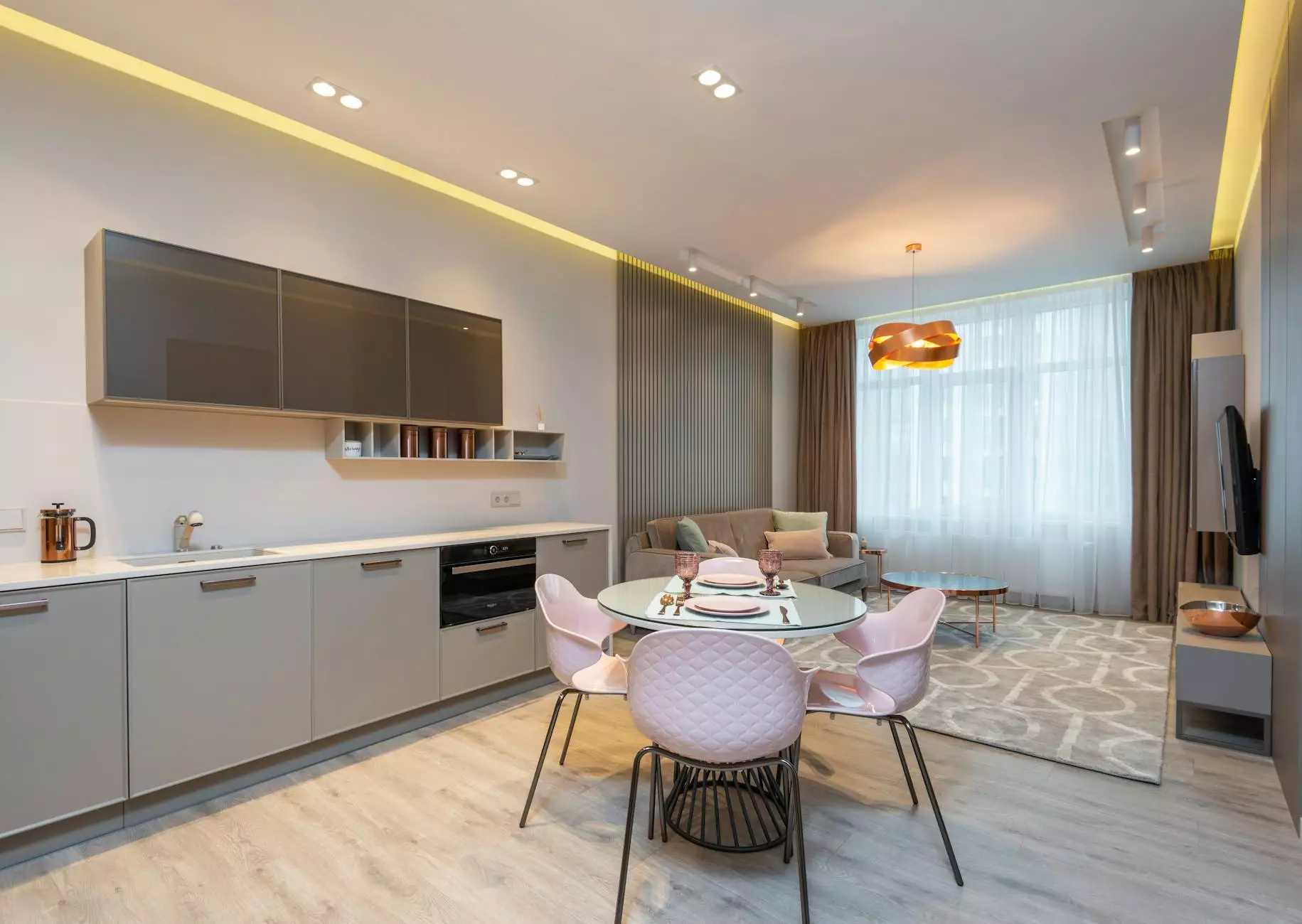How Much Do Kitchen Cabinets Cost?

Introduction
Welcome to Creative Concepts, your go-to destination for all your home and garden interior design needs. In this comprehensive guide, we will delve into the world of kitchen cabinets and provide you with detailed insights into their costs, types, and budget-friendly options.
The Importance of Kitchen Cabinets
Kitchen cabinets serve not only as storage solutions but also as essential elements of your kitchen's overall design. They play a significant role in optimizing functionality, enhancing aesthetics, and reflecting your personal style. Therefore, understanding the cost of kitchen cabinets is crucial when embarking on a kitchen renovation or remodeling project.
Factors Influencing Kitchen Cabinet Costs
Several factors affect the cost of kitchen cabinets:
1. Cabinet Material
The type of material used for constructing kitchen cabinets significantly impacts their price. Common materials include solid wood, plywood, MDF (medium-density fiberboard), and particleboard. Solid wood cabinets tend to be more expensive, while particleboard cabinets are usually more budget-friendly.
2. Cabinet Style
The style and design details of kitchen cabinets can vary greatly. From traditional to modern, shaker to slab, every style has its own unique appeal and price range. Intricate detailing and ornate designs are often associated with higher costs.
3. Cabinet Construction
The construction quality of kitchen cabinets directly affects their durability and longevity. Cabinets with better craftsmanship, such as solid wood dovetail joints or soft-close hinges, tend to be more expensive due to the additional labor and premium features.
4. Cabinet Size and Layout
The size and layout of your kitchen, including the number of cabinets required, can significantly impact the overall cost. Larger kitchens or those with custom layouts may require more cabinets, leading to higher expenses.
5. Finishes and Accessories
The finish options and additional accessories, such as handles, knobs, and decorative elements, can add both aesthetic value and cost. Higher-end finishes and hardware may increase the final price of your kitchen cabinets.
6. Supplier and Location
The choice of supplier and your geographical location can affect the cost of kitchen cabinets. Local suppliers may offer competitive pricing, while specialized suppliers might provide unique designs at higher prices.
Types of Kitchen Cabinets
Let's explore the various types of kitchen cabinets available:
1. Base Cabinets
Base cabinets are the foundation of any kitchen layout. They sit on the floor and provide storage for pots, pans, and other kitchen essentials. Base cabinets are available in different widths, allowing you to create a customized configuration based on your needs.
2. Wall Cabinets
Wall cabinets are mounted on the kitchen walls, above the base cabinets or countertops. They offer additional storage for dishes, glasses, and other frequently used items. Wall cabinets come in various heights and widths to accommodate different kitchen designs.
3. Tall Cabinets
Tall cabinets, also known as pantry cabinets, are floor-to-ceiling storage units that provide ample space for storing pantry staples, cleaning supplies, and other tall items. These cabinets are perfect for maximizing storage in compact kitchens.
4. Corner Cabinets
Corner cabinets are designed specifically to make use of otherwise wasted corner spaces. They feature rotating shelves or pull-out drawers, allowing easy access to stored items. Corner cabinets are an excellent solution for optimizing storage in kitchens with limited space.
5. Specialty Cabinets
Specialty cabinets cater to specific kitchen needs and preferences. This includes features such as spice racks, wine storage, plate racks, or even cabinets designed to house built-in appliances like microwaves or refrigerators.
Budget-Friendly Options
If you are on a tight budget, there are several strategies to save money on kitchen cabinets without compromising on quality:
1. Refacing or Resurfacing
Consider refacing or resurfacing your existing cabinets rather than replacing them entirely. This involves replacing the cabinet doors and drawer fronts, and giving the exterior a fresh look. This option can be significantly more affordable compared to a full cabinet replacement.
2. Ready-to-Assemble (RTA) Cabinets
RTA cabinets come pre-cut and ready for self-assembly. They are typically less expensive than fully assembled cabinets since you handle the installation yourself. RTA cabinets are available in various styles and finishes, providing budget-friendly options for homeowners.
3. Wholesale Cabinets
Wholesale cabinet suppliers often offer discounted prices, especially for bulk orders. Consider exploring wholesale options to save money while still obtaining high-quality cabinets for your kitchen.
4. Comparison Shopping
Research and compare prices from multiple suppliers to find the best deals without compromising on quality. Look for seasonal sales, promotional offers, or volume discounts to align your purchase with your budget.
5. DIY Options
If you possess adequate skills and knowledge, building your cabinets from scratch can be a cost-effective option. However, ensure you have the necessary tools and expertise to complete the project successfully.
Conclusion
In conclusion, understanding the cost of kitchen cabinets is essential for anyone undertaking a kitchen renovation or remodeling project. Factors such as cabinet material, style, construction, size, finishes, and accessories all influence the overall pricing. At Creative Concepts, we offer a wide range of kitchen cabinet options to suit every budget and design preference. Whether you opt for custom designs or budget-friendly alternatives, our expert team is here to assist you in creating your dream kitchen. Contact us today and let us help you transform your kitchen into a functional and aesthetic space.




